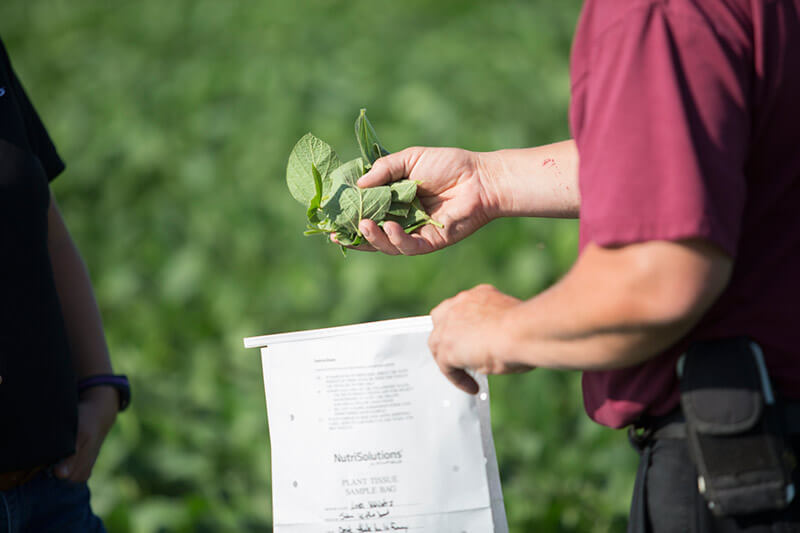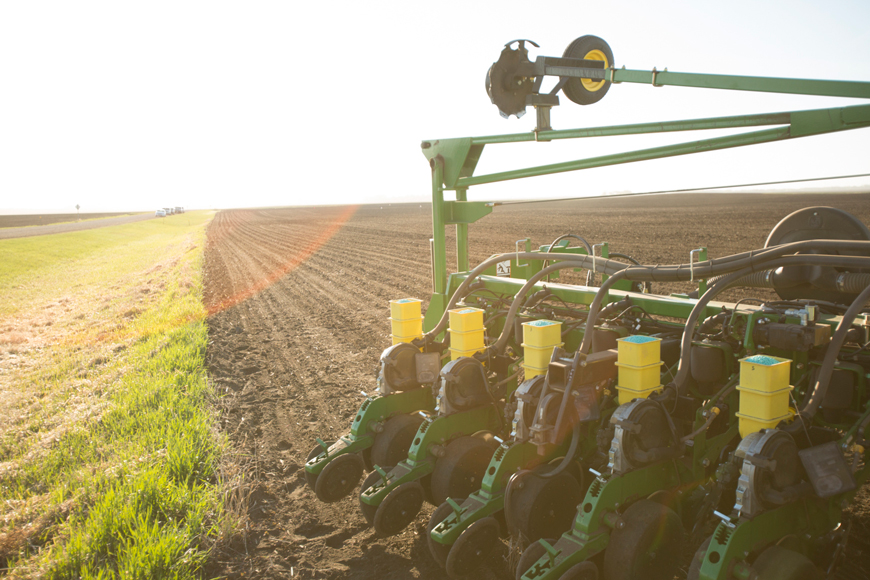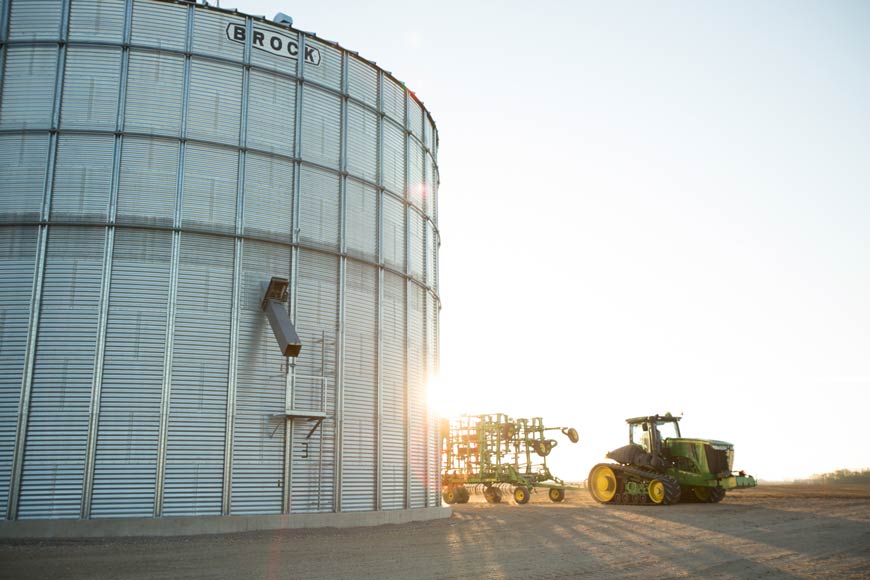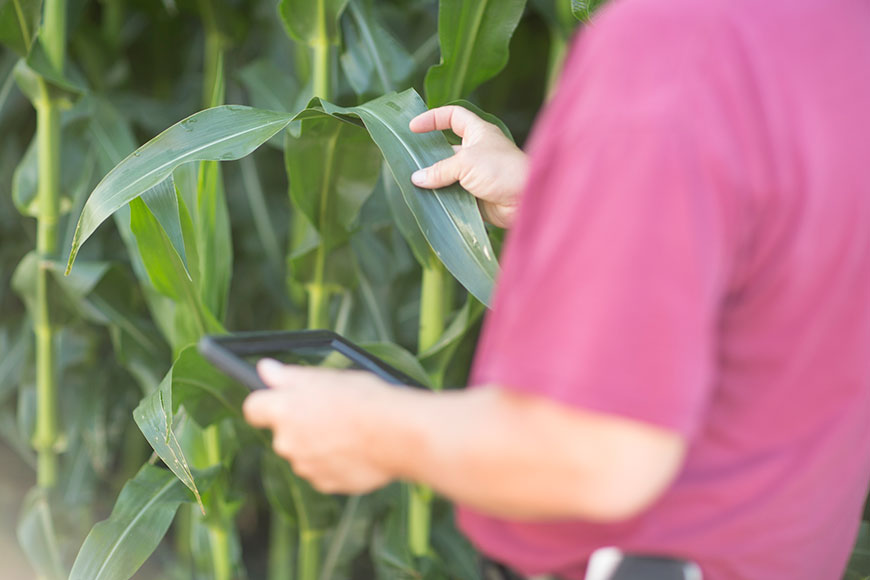NutriSolutions® Tissue Sampling Turns Data Into Insights

Tissue sampling not only can tell you where your crops stand nutritionally; it can also help you tweak your management strategy to achieve greater yield potential. It lets you know what nutrients the plant has taken up and is actually using.
What a tissue sample does not tell you is where the plant will be nutritionally in the future. That is why at WinField, we recommend doing multiple tissue samples throughout the year prior to critical plant growth stages to monitor nutrient levels over time.
WinField has analyzed more than 360,000 tissue samples with its NutriSolutions 360® system during the past seven years — 65,000 of them during the 2015 growing season. This robust database provides local, regional and national insights for multiple crops to help you position your acres for season-long success.
Addressing problems early
After tissue samples are analyzed at a lab and sent electronically to a NutriSolutions® database, a tissue report is generated. This report is then emailed to the agronomist who submitted the sample.
Key nutrient results/levels are shown in the report. WinField manages nutrient sufficiency to the middle of a particular range — not the lower end, like some other entities. If a plant looks healthy but is really nutrient deficient, that “hidden hunger” has already resulted in lost yield potential.
In-season imagery
WinField agronomists have access to R7® Tool in-season imagery that guides them to the areas of the field where they can get the best data and insights possible. With in-season imagery, your agronomist can pull tissue samples from representative parts of the field, as well as from top-performing and poor-performing parts to make a comparative analysis.
“In the industry, tissue sampling is often viewed as reactive — there’s a problem, and tissue analysis might provide an answer,” says my colleague Drew Garretson, WinField regional technology manager for the Eastern and Southern U.S. “WinField turns tissue sampling into a proactive conversation. A tissue sample can identify a problem, but it almost always identifies an opportunity to improve plant health.”
Putting data into action
The optimal way to use insights derived from tissue sampling is to let them inform your management system. For example, you might put needed nutrients in your center pivot irrigation system. Or, if you’re going out to spray with a ground rig, you might include a nutrient there as well.
Consult your agronomist to help you interpret tissue sampling data and make necessary nutrient applications.
“Data really doesn’t mean much until you draw information from it,” says Garretson. “It’s the interpretation of the data that leads you to insights about ways to correct problems and optimize yield potential.”
What a tissue sample does not tell you is where the plant will be nutritionally in the future. That is why at WinField, we recommend doing multiple tissue samples throughout the year prior to critical plant growth stages to monitor nutrient levels over time.
WinField has analyzed more than 360,000 tissue samples with its NutriSolutions 360® system during the past seven years — 65,000 of them during the 2015 growing season. This robust database provides local, regional and national insights for multiple crops to help you position your acres for season-long success.
Addressing problems early
After tissue samples are analyzed at a lab and sent electronically to a NutriSolutions® database, a tissue report is generated. This report is then emailed to the agronomist who submitted the sample.
Key nutrient results/levels are shown in the report. WinField manages nutrient sufficiency to the middle of a particular range — not the lower end, like some other entities. If a plant looks healthy but is really nutrient deficient, that “hidden hunger” has already resulted in lost yield potential.
In-season imagery
WinField agronomists have access to R7® Tool in-season imagery that guides them to the areas of the field where they can get the best data and insights possible. With in-season imagery, your agronomist can pull tissue samples from representative parts of the field, as well as from top-performing and poor-performing parts to make a comparative analysis.
“In the industry, tissue sampling is often viewed as reactive — there’s a problem, and tissue analysis might provide an answer,” says my colleague Drew Garretson, WinField regional technology manager for the Eastern and Southern U.S. “WinField turns tissue sampling into a proactive conversation. A tissue sample can identify a problem, but it almost always identifies an opportunity to improve plant health.”
Putting data into action
The optimal way to use insights derived from tissue sampling is to let them inform your management system. For example, you might put needed nutrients in your center pivot irrigation system. Or, if you’re going out to spray with a ground rig, you might include a nutrient there as well.
Consult your agronomist to help you interpret tissue sampling data and make necessary nutrient applications.
“Data really doesn’t mean much until you draw information from it,” says Garretson. “It’s the interpretation of the data that leads you to insights about ways to correct problems and optimize yield potential.”




